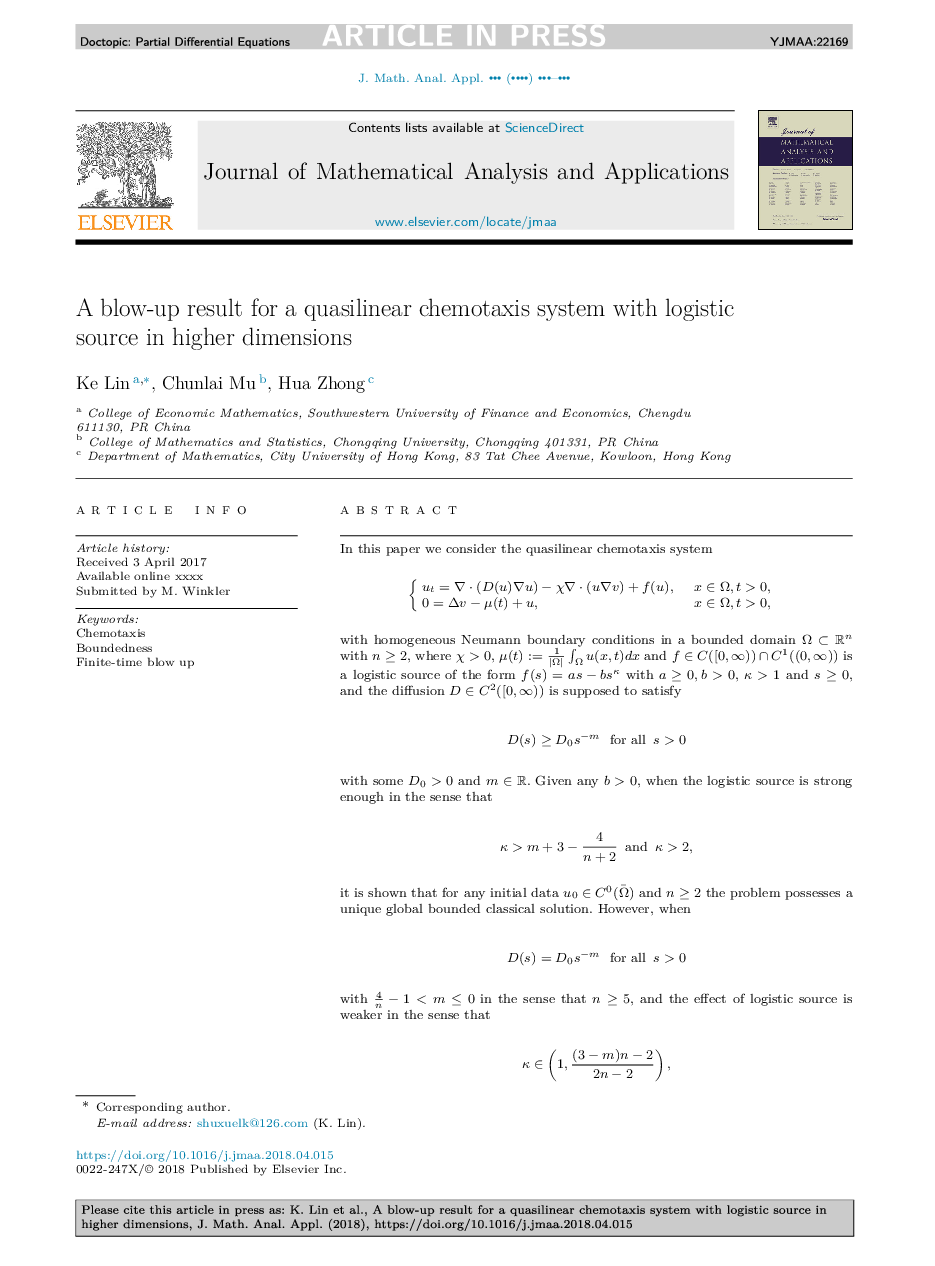| Article ID | Journal | Published Year | Pages | File Type |
|---|---|---|---|---|
| 8899601 | Journal of Mathematical Analysis and Applications | 2018 | 21 Pages |
Abstract
In this paper we consider the quasilinear chemotaxis system{ut=ââ
(D(u)âu)âÏââ
(uâv)+f(u),xâΩ,t>0,0=Îvâμ(t)+u,xâΩ,t>0, with homogeneous Neumann boundary conditions in a bounded domain ΩâRn with nâ¥2, where Ï>0, μ(t):=1|Ω|â«Î©u(x,t)dx and fâC([0,â))â©C1((0,â)) is a logistic source of the form f(s)=asâbsκ with aâ¥0,b>0, κ>1 and sâ¥0, and the diffusion DâC2([0,â)) is supposed to satisfyD(s)â¥D0sâmfor alls>0 with some D0>0 and mâR. Given any b>0, when the logistic source is strong enough in the sense thatκ>m+3â4n+2andκ>2, it is shown that for any initial data u0âC0(Ω¯) and nâ¥2 the problem possesses a unique global bounded classical solution. However, whenD(s)=D0sâmfor alls>0 with 4nâ10 there exists initial data u0âCâ(Ω¯) satisfying â«Î©u0=M0 such that the corresponding solution (u,v) of the system blows up in finite time in a ball Ω=B0(R)âRn with some R>0. This result extends the blow-up arguments of the Keller-Segel chemotaxis model with logistic cell kinetics in Winkler [39] to more general quasilinear case. Moreover, since there is a gap in the proof of Zheng et al. [46], it also presents modified results for the mistake.
Keywords
Related Topics
Physical Sciences and Engineering
Mathematics
Analysis
Authors
Ke Lin, Chunlai Mu, Hua Zhong,
